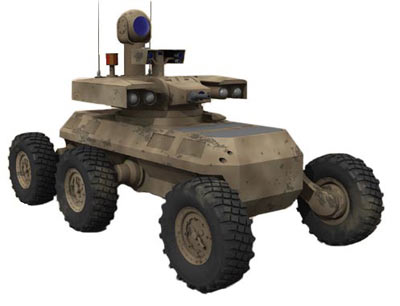Future War Revisited
21 Nov, 2008 11:18 am
Think of a futuristic war scenario where soldiers are firing smart weapons from the confines of their command centres. Weapons that are capable of intercepting and destroying virtually all enemy attack weapons and yet, they are fired from unmanned vehicles thereby minimising all possibilities of human casualties.
 |
That's the opening of an article in Financial Express titled "Small Wonders" [hat tip to Nanotechnology Now]. What they describe in that excerpt represents the type of advanced nanotechnology impact on warfighting that CRN has been warning about since at least 2005, when we provided this assessment about one kind of risk for a Millennium Project survey:
Large quantities of smart weapons — especially miniaturized, robotic
weapons and intelligent, target-seeking ammunition without reliable
remote off-switches could lead to unexpected injury to combatants and
civilians, destruction to infrastructure, and environmental pollution.
The rest of the Financial Express article deals mostly with 1st and 2nd generation nanotechnologies, although not explicitly. In fact, it tends to confuse some of the expected benefits of advanced nanotech ("visions of lightweight materials many times stronger than steel") with earlier generation projections.
We've noted this sort of problem many times before, of course. It's difficult to keep writers from making such mistakes when even so-called experts in the field will sometimes conflate the risks and benefits of molecular manufacturing with other less revolutionary nanoscale technologies.
For a more accurate and more complete look at the future of warfare, especially in the context of advanced nanotechnology, take a look at this presentation that I gave at the World Future Society annual conference in 2007 (and subsequently presented to a group of officers at the U.S. Naval War College). Further understanding of the potential impacts of emerging technologies on waging war can be gained by reading a convincing future scenario called "Crisis in Zefra," prepared by Canada's Directorate of Land Strategic Concepts.
No matter how you look at it, the future looks more precarious than the present, unless we are fortunate and suddenly mature as a species before it's too late.
20 NOV UPDATE: Check out this skeptical article posted today titled "Are Pentagon Nerds Developing Packs of Man-Hunting Killer Robots?"
Originally published in Responsible Nanotechnology







 Read more
Read more